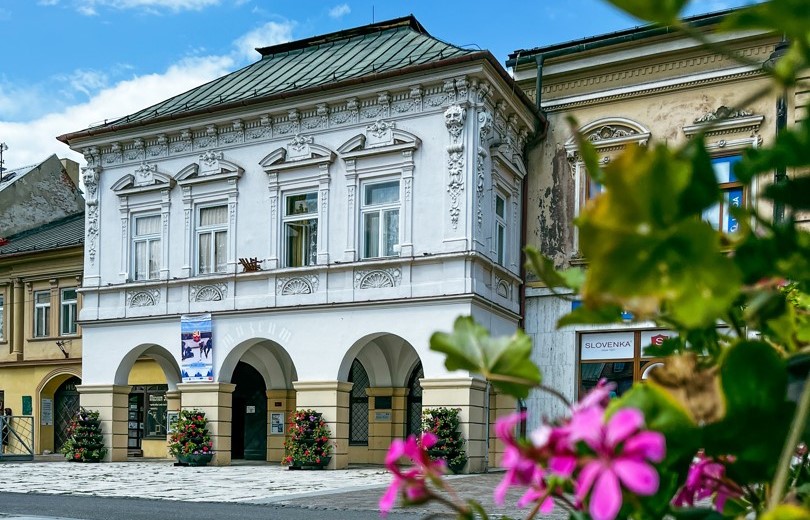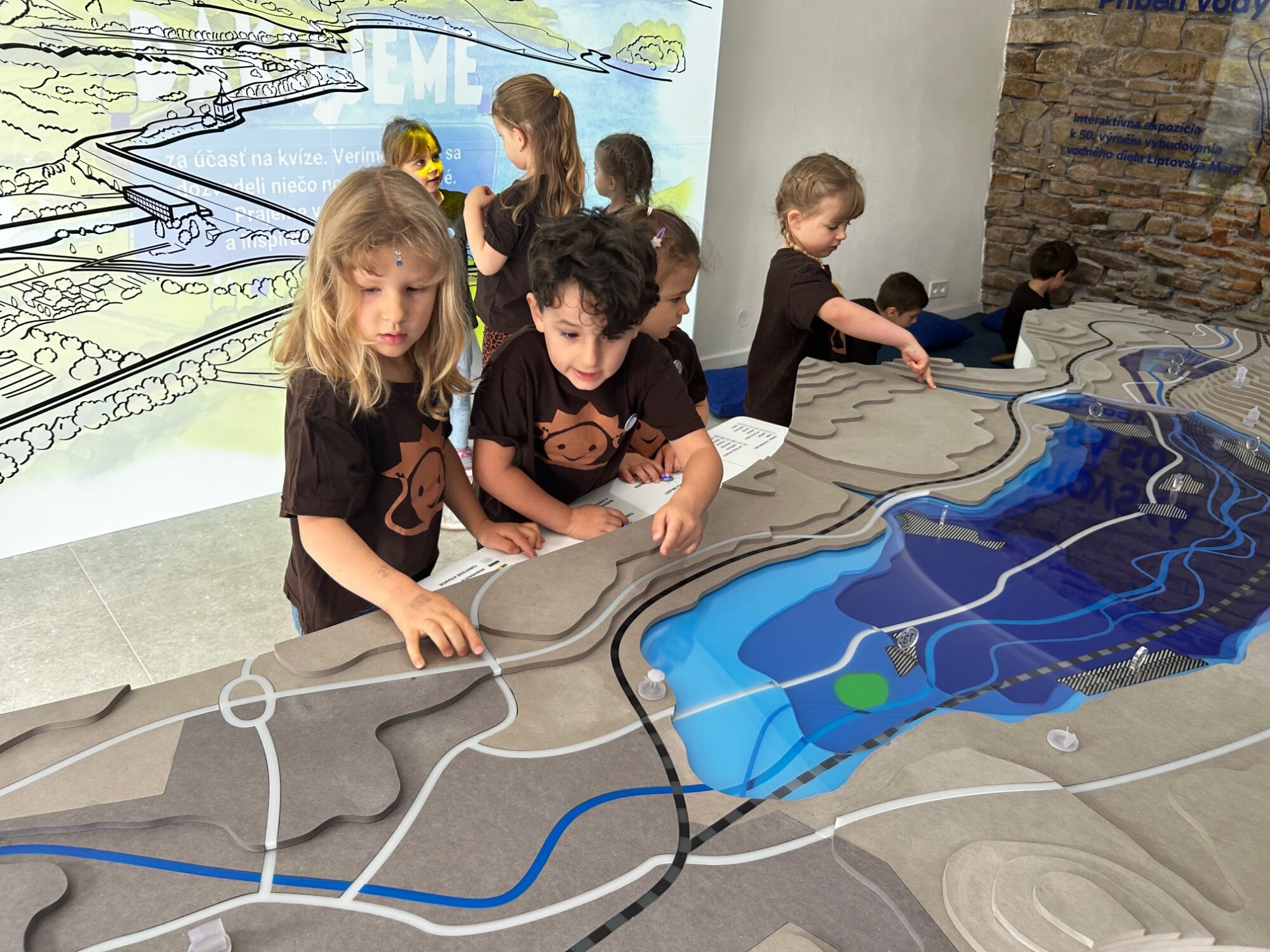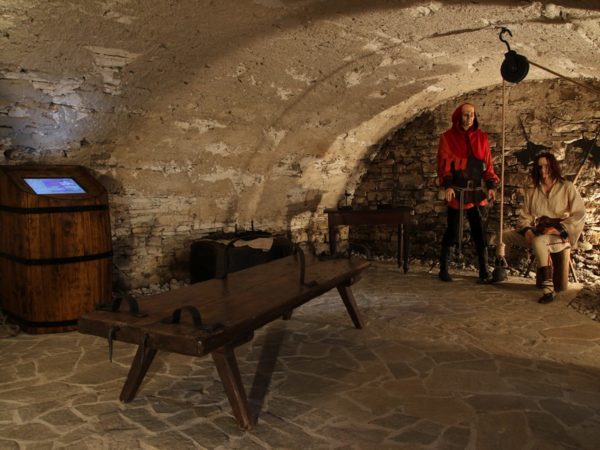25% DISCOUNT admission to all expositions of the Janko Kráľ Museum
The main exhibition Chapters from the history of the town, Jánošík’s Torture Chamber and the Courtroom are hosted by the ancient
premises of the first landlord house and the Strauss House in the historic centre. Take a look into the room of the romantic poet Janko
Kráľ and the life of the world-famous inventor Aurel Stodola. Meet Eduard Penkala, inventor of the first mechanical pen. Get to know
the leading local families and tannery that made Liptovský Mikuláš famous far beyond the borders of the country. You will surely be
enchanted by the museum’s beautiful historical library with 4500 rare titles.
The most interesting facts from the rich almost 740-year history of Liptovský Mikuláš town are presented by the Janko Kráľ town Museum. The main exhibition of Liptovský Mikuláš history chapter , Jánošík’s Torture Chamber and the Courtroom are hosted by the ancient premises of the first landlord house and the Strauss House in the historic centre. Take a look into the room of the romantic poet Janko Kráľ and the life of the world-famous inventor Aurel Stodola, who was respected by Einstein himself! Meet another famous native citizen of Liptovský Mikuláš – Eduard Penkal, inventor of the first mechanical pen. Get to know the leading local families and tannery that made Liptovský Mikuláš famous far beyond the borders of the country. You will surely be enchanted by the museum’s beautiful historical library with 4500 rare titles.
The building that houses the Janko Kral Museum is one of the most distinctive buildings of the square in the town of Liptovský Mikuláš. It has several names – the County House (Stoličný House), the Illešházy Manor House and the Seliga’s House. It features a triple arch that is unusual for the town and stands out from the rest of the buildings on the square’s western side.
The Seliga’s House as well as the adjacent Strauss’s House feature one of the Janko Kráľ Museum’s permanent exhibitions called Chapters from the History of the Town of Liptovský Mikuláš. It showcases the town’s history from the earliest era until the end of WWII, and includes a commerative room of Romanticist poet and the town’s native Janko Kráľ.
The building’s subterranean areas feature the Liptovský Mikuláš Torture Chamber that displays the torture and interrogation of legendary outlaw and folk hero Juraj Jánošík on the second day of his court process. He robbed the rich and gave to the poor. You can see torture instruments used at court interrogation in 18th century.
The other permanent exhibitions of the Janko Kráľ Museum are located in the historical evangelical parish house on Tranovského Street (Tatrín and the Petitions of the Slovak Nation), and in the house of Rázus brothers on Vrbického Street (Rázus’s House).
The museum also administers the Jewish Synagogue on Hollého Street that is available for the public in summer.
In celebration of the 50th anniversary of the Liptovská Mara dam, visit The Story of Water, a new interactive exhibition open from the start of the summer tourist season.
You can learn more about Liptovský Mikuláš on the Liptovský Mikuláš website.
NEW EXHIBITION: The Story of Water
Opened in 2025 on the occasion of the 50th anniversary of Liptovská Mara.
The Janko Kráľ Museum’s exhibition The Mikuláš Torture Chamber was opened to the public in December 1999. It is located in the vaulted cellar of the former Strauss House, now part of the museum’s main building on Liberators’ Square.
Though small in size, the exhibition is unique in content. Its subtitle, Fragments from the Tortured Interrogation of Juraj Jánošík, reveals its focus on documents relating to the trial of the legendary Slovak outlaw, which took place in Liptovský Mikuláš on 16 and 17 March 1713.
The Museum presents a unique interactive exhibition about Liptovská Mara Reservoir, whose waters forever changed the face of the region. Embark on a journey through time and learn how the construction of the dam shaped both the landscape and the lives of its people.
Explore a touchscreen map of the submerged villages, immerse yourself in the story of the reservoir in the 3D cinema, and use the interactive wall to take on the role of a hydroelectric plant operator. Young visitors will enjoy a game where they can catch and learn about the fish typical of Liptovská Mara.
The exhibition’s ambience is brought to life with a floor projection of the Váh River’s flow and a wall evoking the ripples of a water surface. Display panels reveal the fate of the flooded villages, the impact of resettlement, the dam’s ecological and water management significance, and the history of rafting on the Váh.
Discover the stories hidden beneath the surface and experience history in a vivid, engaging way!
The childhood home of the most famous native of Vrbica – the poet, writer, pastor, and politician Martin Rázus (1888–1937) – stands near the Aurel Stodola housing estate, which lies on the site of the former village of Vrbica, which until 1923 was an autonomous municipality neighbouring Liptovský Mikuláš. The original rooms of the “Rázus House” are dedicated to Martin Rázus, his sister (the poet Mária Rázusová-Martáková), and their brothers Michal and Matej, who were well-known local printers. Part of the exhibition also commemorates other notable natives of Vrbica, whose work contributed to the development of various fields both in Slovakia and abroad.
This exhibition is located on Demands of the Slovak Nation Square (Námestie Žiadostí slovenského národa), within a unique complex of buildings connected to the Evangelical Church of Mikuláš, built in 1785. The Old Evangelical Parish (known as the Hodža Parish) brings to life the turbulent 1840s, the foundation and pioneering activities of the Tatrín association (1844–1848) – the forerunner of Matica slovenská – and the preparation and declaration of the first political programme of the Slovak nation: Žiadosti slovenského národa (Demands of the Slovak Nation, 1848).
The synagogue on Hollého Street, its timeworn interior steeped in history, opens to the public during July and August. Here, the Janko Kráľ Museum presents the history of what was once a sizeable Jewish community in Liptovský Mikuláš, alongside a variety of art projects. A memorial plaque on the façade commemorates more than 800 victims of the Holocaust who were deported from Liptovský Mikuláš to concentration camps. Architecturally, the synagogue is the town’s most monumental neoclassical building and ranks among the largest of its kind in Slovakia. It was built by the Jewish congregation between 1842 and 1846 on the site of the original wooden synagogue.




Please describe your experience